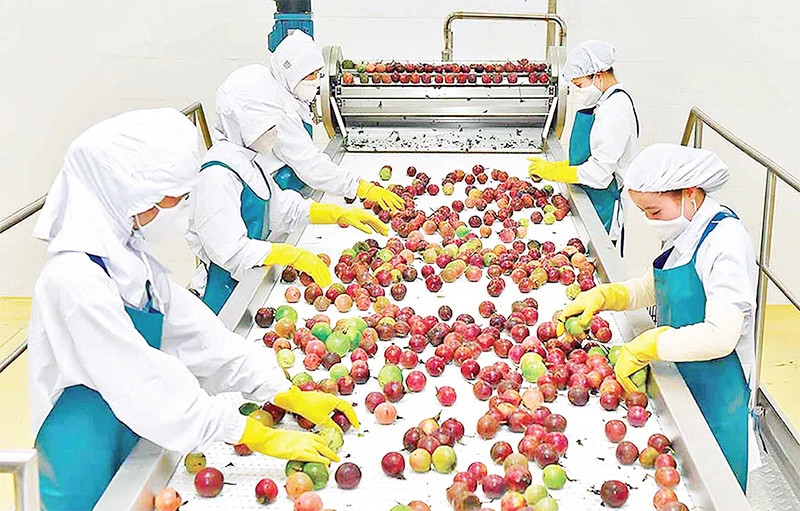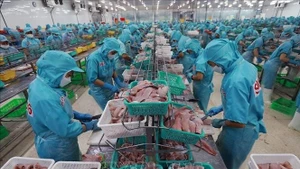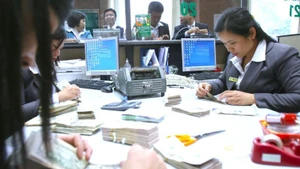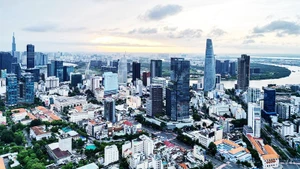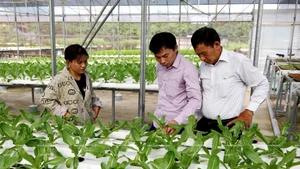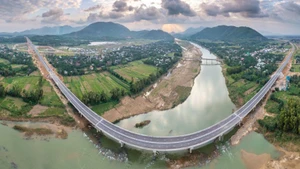According to the Ministry of Agriculture and Rural Development, in recent years, agricultural enterprises have gradually grown and paid more attention to investing in building agricultural processing factories. However, about 90% of Vietnam's agricultural products are still exported in raw form, significantly affecting the economic value of agriculture.
Increasing processing, increasing value
Dinh Cao Khue - Chairman of the Board of Directors of Dong Giao Foodstuff Export Joint Stock Company (Doveco) said that the company has built concentrated raw material areas and modern fruit and vegetable processing factories, over the years.
Currently, Doveco Gia Lai can process 300 tonnes of passion fruit raw materials per day, 500 tonnes of pineapple per day and 200 tonnes of mango per day, and can process hundreds of tons of bananas, avocados, dragon fruit, sweet corn, okra and sweet potatoes.
Thanks to deep processing the company's products have been present in more than 60 countries, conquering high-quality markets such as the US, Japan, China, Brazil, and Israel.
According to the Vietnam Fruit and Vegetable Association, in 2023, Vietnam's processed fruit and vegetable export turnover will reach nearly 1.2 billion USD, accounting for about 21% of the total fruit and vegetable export turnover. This is the second consecutive year that processed fruit and vegetable exports have reached the milestone of more than one billion USD. The main processed products are mango, passion fruit, almonds, pistachios, canned fruit, and bottled juice, with the main markets being the US, Europe, Japan, and the Republic of Korea. Recently, China has also increased its imports of these items.
The formation of many concentrated, high-quality raw material areas and the application of modern processing technology are the main factors for the growth of the fruit and vegetable processing sector.
For the seafood industry, the processing is also being identified as an important solution on the journey to overcome difficulties and regain growth momentum. According to the Vietnam Association of Seafood Processors and Exporters, processed products currently account for 40-45% of the total annual shrimp export value for the main shrimp products. As processing technology develops more and more, demand from markets increases, and the development of processed shrimp products needs to be promoted.
Currently, the general processing level of Vietnamese shrimp enterprises is high and this is a huge competitive advantage around the world. If the processed shrimp export segment develops further, the turnover of this item will far exceed the figure of 3.38 billion USD in 2023.
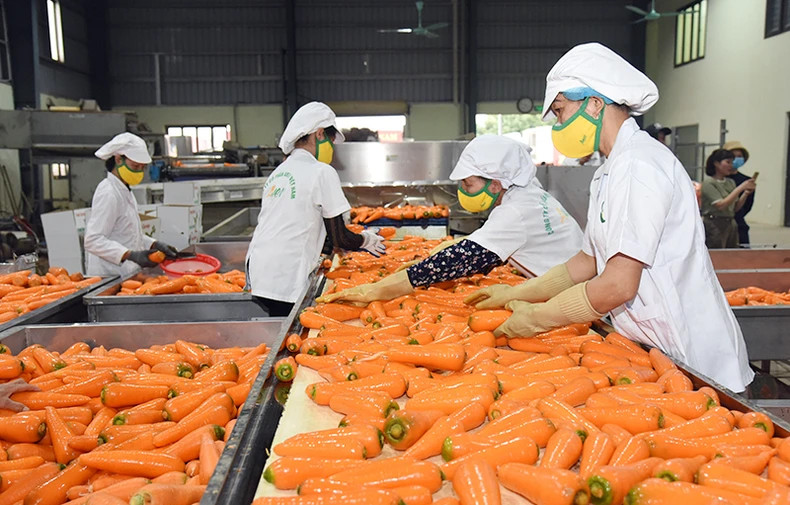 |
| Processing carrots for export at AMEII Vietnam Joint Stock Company (Hai Duong province). (Photo: DUC ANH) |
Investing to catch up with trend
Truong Dinh Hoe, General Secretary of the Vietnam Association of Seafood Exporters and Producers (VASEP), stated aquaculture output growth is limited, and processing value-added products will become a trend, helping to achieve future seafood export turnover targets.
Since 2021, the Prime Minister has signed Decision No. 1408/QD-TTg, approving the Project on developing the seafood processing industry for the period 2021-2030 with the goal that by 2030, the value of seafood export turnover will reach about 14-16 billion USD, making Vietnam a centre for seafood processing and among the top five countries in the world.
To achieve that goal, it is necessary to implement the planning tasks and prioritise investment in synchronous technical infrastructure for concentrated aquaculture areas. It is imperative to reorganise aquaculture towards production linkage to create quality raw materials, ensuring food safety, and large-scale goods for processing activities.
In processing, it is necessary to focus on key product groups, such as shrimp, pangasius, and tuna. It is imperative to focus on research and development of products from seaweed and by-products, extract high-value bioactive compounds to serve the food and pharmaceutical industries and research and test products with economic value from by-products such as raw materials for supplementary feed in livestock and fertilisers.
Along with seafood and vegetables, coffee is also a commodity with a high export turnover, reaching 4.18 billion USD in 2023. It is forecasted that in 2024, coffee export turnover may reach 5 billion USD.
However, currently, Vietnam mainly exports green coffee, about 91% in volume, and 85% in value, while processed coffee is still low. Therefore, deep processing in the coffee sector also needs more investment.
Currently, some businesses have developed deeply processed coffee products according to new tastes and consumption trends, such as Meet More coffee products of Global Trade Link Company Limited, offering instant coffee with mint, taro, coconut, and green beans. The product is available in Australia, the UK, Japan, India, Russia, America, and the Republic of Korea. This new direction contributes to increasing the value of this potential industry in Vietnam.
Regarding the general development trend of the agricultural processing sector, Le Thanh Hoa - Deputy Director of the Department of Quality, Processing and Market Development said: In recent times, Vietnam has signed many bilateral and multilateral free trade agreements with countries and regions, bringing many advantages in terms of markets and tariffs for agricultural production and processing enterprises.
To seize opportunities and increase competitiveness enterprises must invest in modern equipment and technology and improve processing capacity. Relevant units need to develop a plan for concentrated raw material areas to increase the effectiveness of linkages between localities, regions, farmers and enterprises, to create stable raw material areas for export processing.
Vietnam's food production and processing industry is showing a strong growth trend, gradually supplying many highly competitive products, dominating the domestic market and increasing exports. The number of enterprises operating in the food processing industry is not large (accounting for nearly 1% of the total number of enterprises nationwide), but this is one of the key industries with great potential for development in Vietnam.
Currently, the number of enterprises operating in the field of processing and producing vegetables and fruits accounts for the highest structural proportion of enterprises in the food processing industry with the frozen seafood processing industry attracting the most workers.
(Source: General Statistics Office)
